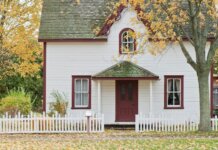Housing starts in April jumped 5.7% compared with March but were down 2.5% compared with April 2018, according to the latest estimates from the U.S. Census Bureau and the U.S. Department of Housing and Urban Development.
As of the end of March, construction of single-family and multifamily homes had reached a seasonally adjusted annual rate of 1.235 million units, up from 1.168 million in March but down from 1.267 million in April 2018.
Starts of single‐family homes were at a rate of about 854,000, an increase of 6.2% compared with a revised figure of 804,000 in March. Starts of multifamily homes were at a rate of 359,000, an increase of 2.3% compared with 351,000 in March.
Regionally, combined single-family and multifamily starts in April increased 84.6% in the Northeast and 42% in the Midwest, however, they decreased 5.7% in the South and 5.5% percent in the West.
Building permits also increased month over month, rising 0.6% compared with March, however, they were down 5% compared with a year earlier.
Permits in April were at a seasonally adjusted annual rate of 1.296 million, up from 1.288 million in March but down from 1.364 million in April 2018.
Permits for single‐family homes were at a rate of about 782,000, a decrease of 4.2% compared with 816,000 in March. Permits for multifamily homes were at a rate of 467,000, an increase of 7.1% compared with a year earlier.
Regionally, permits increased 2.2% in the Midwest and 5.3% in the West but fell 4% in the Northeast and 1.2% in the South.
Housing completions in April were down 1.4% compared with the previous month but were up 5.5% compared with a year earlier.
Completions reached a seasonally adjusted annual rate of 1.312 million, down from 1.331 million in March but up from 1.244 million in April 2018.
Completions of single-family homes were at a rate of 918,000, an increase of 4.1% compared with 957,000 in March, while completions of multifamily units were at a rate of 381,000, an increase of 5.8% compared with 360,000 the previous month.
“Builders remain cautious due to affordability concerns,” says Greg Ugalde, chairman of the National Association of Home Builders (NAHB), in a statement. “But as our builder confidence survey shows, their expectations indicate consumers will respond to lower interest rates moving forward and the housing market will continue on a slow, steady climb.”
“Though an overall encouraging report for the month of April, the soft permit numbers for single-family housing indicate concerns about housing affordability and construction costs,” adds Robert Dietz, chief economist for NAHB. “Builders continue to focus on managing home construction costs as they try to meet growing housing demand. NAHB analysis of first quarter permit data show growth in more affordable exurban locations.”
Odeta Kushi, deputy chief economist for First American, says “rising demand from millennials ageing into homeownership and limited supply, partly from baby boomers aging in place, will continue to put pressure on the housing market.”
“The month-over-month increase in single-family housing starts is an improvement towards meeting this demand, but falls short of the 1.2 million units that demographics would support,” Kushi says in a statement.
She adds that the month-over-month increase in housing starts shows that builders are “pushing through new construction projects” despite “supply-side headwinds, such as a shortage of labor, costly regulations, and a shortage of buildable lots.”
“The positive report supports a brighter outlook for the housing sector in 2019, as demographics and low mortgage rates continue to support demand,” Kushi says.












